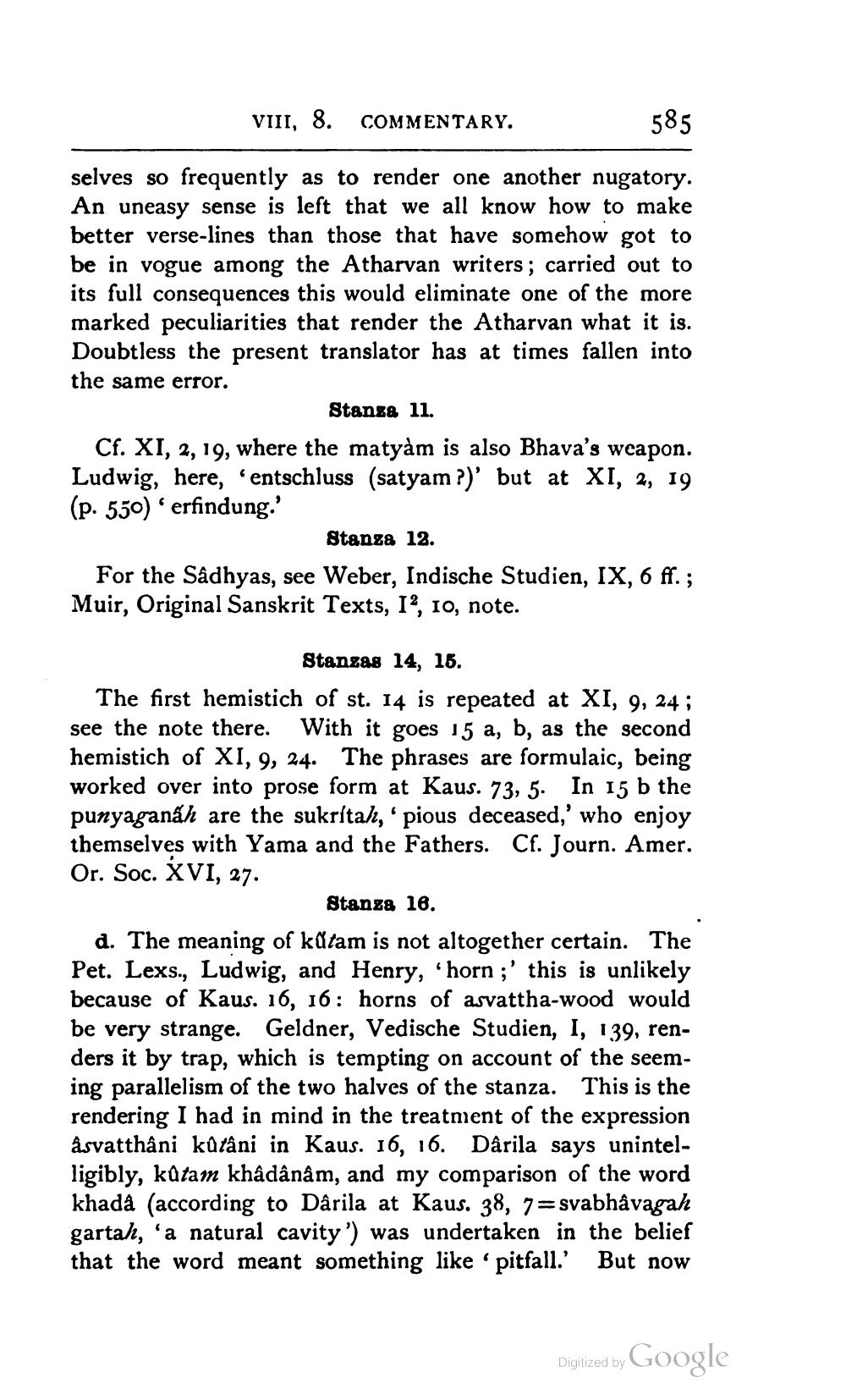________________
VIII, 8. COMMENTARY.
585
selves so frequently as to render one another nugatory. An uneasy sense is left that we all know how to make better verse-lines than those that have somehow got to be in vogue among the Atharvan writers; carried out to its full consequences this would eliminate one of the more marked peculiarities that render the Atharvan what it is. Doubtless the present translator has at times fallen into the same error.
Stanza 11. Cf. XI, 2, 19, where the matyám is also Bhava's weapon. Ludwig, here, 'entschluss (satyam ?)' but at XI, 2, 19 (p. 550) erfindung.'
Stanza 12. For the Sâdhyas, see Weber, Indische Studien, IX, 6 ff.; Muir, Original Sanskrit Texts, 1?, 10, note.
Stanzas 14, 16. The first hemistich of st. 14 is repeated at XI, 9, 24; see the note there. With it goes 15 a, b, as the second hemistich of XI, 9, 24. The phrases are formulaic, being worked over into prose form at Kaus. 73, 5. In 15 b the punyaganah are the sukritah, pious deceased,' who enjoy themselves with Yama and the Fathers. Cf. Journ. Amer. Or. Soc. XVI, 27.
Stanza 16. d. The meaning of kåtam is not altogether certain. The Pet. Lexs., Ludwig, and Henry, 'horn ;' this is unlikely because of Kaus. 16, 16: horns of asvattha-wood would be very strange. Geldner, Vedische Studien, I, 139, renders it by trap, which is tempting on account of the seeming parallelism of the two halves of the stanza. This is the rendering I had in mind in the treatment of the expression asvatthâni kutâni in Kaus. 16, 16. Dârila says unintelligibly, katam khâdânâm, and my comparison of the word khadà (according to Dârila at Kaus. 38, 7=svabhavagah gartah, 'a natural cavity') was undertaken in the belief that the word meant something like 'pitfall. But now
Digitized by Google




